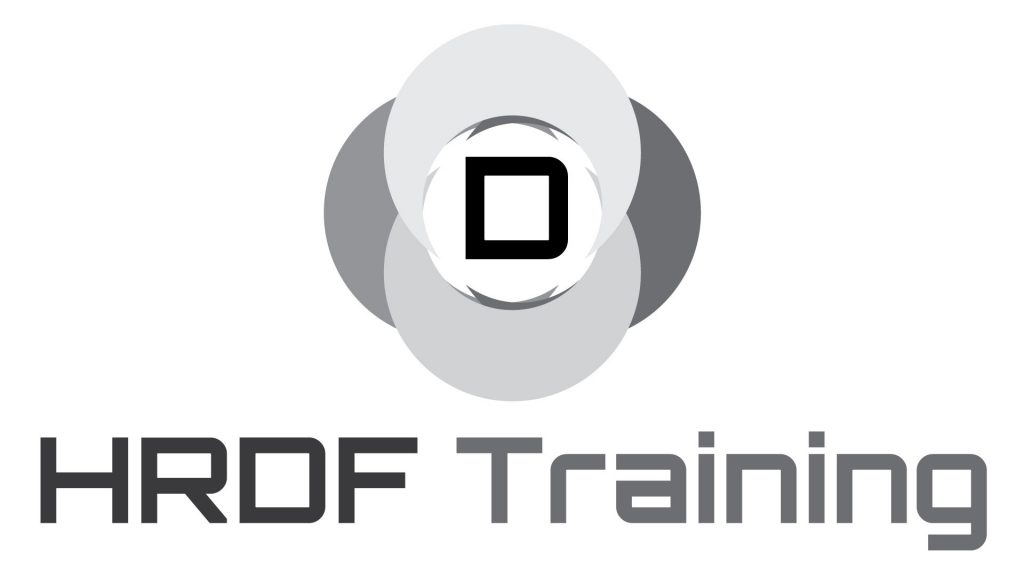HRDF Claimable Video Editing Training Course Malaysia
Malaysia HRDF Claimable under HRDF SBL Khas for HRDF Registered Company "Claimable Video Editing Training Course Descriptions"
Best HRDF Claimable Video Editing Training Course in Malaysia
Learning to edit video provides professional opportunities The most obvious roles in video editing are those in film and television production. However, these are not the only industries that use video editors. Organizations need help to create content for training, marketing, and customer presentations. This requires both in-house company video editing roles and free video editors hired for specific projects. With the increase in digitization and accessibility, video is an easy way for companies to deliver messages. They are often used as an alternative to generating printouts or longer text descriptions on websites. According to the US Bureau of Labor Statistics, as consumers become more interested in video and streaming services, the demand for professional video editors is expected to only increase. Video distributors are also developing the industry from the inside out. This happens when video editors create new types of content such as virtual reality and 360-degree immersive video, and they have the potential to expand the use of video editors to more industries.
What you going to learn in HRDF Video Editing Training
- Introduction to photography and video production
- How to choose the right camera for video recording
- Seven basic video camera skills
- Microphone and recording technology
- Indoor and coaxial video lighting technology
- Introduction to computer and video editing software
- Adobe Premiere Pro video editing techniques for everyone
- Master montage effects using Adobe After Effects
- How to improve the brightness and color of videos
- How to repair and improve recordings
- Publishing YouTube and web videos
- Discover the art of telling visual stories
HRDF Fully Claimable Video Editing Training Course is 100% Claimable for You – Claimable under HRDF SBL Khas for HRDF Registered Company
Video editing is an evolving field
Although many video editing jobs offer formal training or a degree, income from video editing positions is above average. and the number of available video editing positions is expected to increase by tens of thousands over the next few years. For those who do not wish to work directly in the company or who cannot find a full-time position, they can work as an independent contractor providing video editing services. to work independently. While platforms are rapidly releasing content to meet the seemingly endless demand for video entertainment, the demand for video publishers remains high.
How to learn video editing
You can learn video editing through HRDF Claimable Video Editing Training Course, workshops, and tutorials. This includes specific video editing tools (such as Premiere & Adobe After Effects), less than After Effects for those who want to use special effects and animations to enhance their video.
Full HRDF Claimable Courses List
Click Here for Full HRDF Training Course Events
Why Choose Our HRDF Claimable Video Editing Training Course?
What Our HRDF Video Editing Course Included?

Why learning HRDF Claimable Graphic Video Editing for business?
Well, actually it is already there. If you haven’t realized this, you will find that most musicians and artists make music videos. why? Because their fans want it. I bet you might go to youtube to find music videos of your favorite bands or singers. Video plays a huge role in our modern society. Every time a new product or album is released, a promotional video or trailer is usually attached.
How Important Is Video Editing For Your Business to find client and customer
Content marketing has changed dramatically in the past few years and video has become a central topic. This is arguably the most effective strategy for connecting with the audience. In the age of mobile marketing in particular, many smartphone users find it difficult to advocate engaging types of video content.
Look at these numbers:
Every month, 85% of Internet users in the United States watch video content.
By 2021, ordinary people will spend 100 minutes every day watching videos online (up 19% from 2019).
93% of companies say they have acquired new customers from video content on social media.
63% of companies state that social media videos can generate a return on investment (ROI).
Despite the enormous potential of video marketing, many companies are still on the sidelines. Many marketers find it easier to create blogs, case studies, and even white papers. In contrast, the concept of providing fresh and unique video content on a regular basis is a daunting prospect.
The truth is, video marketing isn’t as complicated as it looks. It’s just about getting to know the content of the video that people love to see and then providing more content.
In this article, we’re going to explore these exciting ways of video marketing and give you the information you need to build brand awareness, attract customers, and get people to act.
HRDF Claimable Video Editing Training Course – Adobe Premiere Pro
In this project-based Learning Adobe Premiere Pro CC video tutorial series, you’ll quickly have relevant skills for real-world applications. Follow along with our expert instructor in this training course to get: Concise, informative and broadcast-quality Adobe Premiere Pro CC training delivered to your desktop. The ability to learn at your own pace with our intuitive, easy-to-use interface
A quick grasp of even the most complex Adobe Premiere Pro CS6 subjects because they’re broken into simple, easy to follow tutorial
Who Should Attend this Training Course
Graphic professionals who want to enhance their motion editing and compositing. Experienced
users will also benefit from the many tips and tricks and special exercises.
Course Outlines:
01. Introduction
02. Explaining The Video Production Workflow
03. Getting Started
04. Importing, Capturing, And Managing Assets
05. Adding And Arranging Clips On A Single Audio/Video Pair Of Tracks
06. Trimming And Adjusting Clips
07. Making Specialized Edits
08. Adding Video And Audio Transitions
09. Working With Video Effects
10. Checking Out A Selection Of Video Effect Categories And Specialized Effects
11. Performing Color Correction
12. Introducing Compositing (Layering)
13. Animating Motion Effects
14. Using Keying Effects
15. Specialized Compositing: Adjustment Layers And The Track Matte
16. Working With The Titler
17. Introducing Audio Editing
18. Making Specialized Audio Edits
19. Working With Audio Effects
20. Using The Audio Mixer
HRDF Claimable Video Editing Training – Adobe After Effects
In this Adobe After Effects CC training course from Double Effect Training House, you will learn how to get the most out your post-production effects and compositing with this powerful software from Adobe. Designed for the beginner till Expert, you will learn how to use After Effects CC from the ground up, no previous experience is necessary! You will start this tutorial with an overview of the After Effects workflow, and a tour of the interface to become familiar with the location of the tools you will use. The course then immediately gets you working hands-on with projects; importing video, importing assets, creating and arranging your layers and working with text. You will learn how to work with shapes, and techniques for using the paint tools.
The course introduces you to masks, matts and stencils, and distorting and animation using Puppet Tools. As you continue through the After Effects CC training you will learn how to apply effects and transitions, track motion, stabilize video, and work within 3D space with Templates download from our website. An amazing new feature to After Effects CC is the ability to bring in Cinema 4D scenes as layers using the Live 3D Pipeline, and Jeff will show you how! Once you have completed this Adobe After Effects CC video tutorial, you will have a solid grasp on how to apply the tools in this visual effects software to your own video projects. Working les are included, allowing you to follow along with the author throughout the lessons
Training Course Tentative
DAY 1
Section 1: Introduction
Lecture 1
Important – Working Files – Download Template First
Lecture 2
What Is Covered In This Course
Lecture 3
How We Combine After Effects CS6 And CS Lessons
Lecture 4
An Overview Of Adobe After Effects – Part 1
Lecture 5
An Overview Of Adobe After Effects – Part 2
Lecture 6
Setting Up The Exercise Files
Lecture 7
Re-Linking Assets
Section 2: Explaining The After Effects Work ow And Workspace
Lecture 8
Explaining The Work ow
Lecture 9
Walking Through A Mini-Project
Lecture 10
Touring The Workspace
Lecture 11
Customizing The Workspace
Lecture 12
Examining Features On The Timeline Panel
Section 3: Creating A Project And Importing Footage
Lecture 13
Starting A New Project
Lecture 14
Importing Video, Audio, Graphics And Still Images
Lecture 15
Importing Layered Photoshop And Illustrator Files
Lecture 16
Organizing Assets In The Project Panel
Lecture 17
Finding Missing Footage, Fonts And Effects
Section 4: Creating, Arranging And Compositing Layers In A Composition
Lecture 18
Creating A New Composition
Lecture 19
Adding Assets To A Composition
Lecture 20
Adding Layers To A Composition
Lecture 21
Adjusting Composition Panel Settings
Lecture 22
Viewing And Previewing A Composition
Lecture 23
Selecting, Moving, Trimming And Splitting Layers
Lecture 24
Working With Image Sequences
Section 5: Modifying And Animating Layer Transform Properties
Lecture 25
Setting Layer Transform Property Values
Lecture 26
Animating Transform Properties With Keyframes
Lecture 27
Creating And Changing Motion Paths
Lecture 28
Using Easy Ease And Hold Keyframes
Lecture 29
Using Anchor Points And Motion Blur To Create Whip Pans
Lecture 30
Setting Scaling Quality Using Bicubic Or Bilinear Sampling
Section 6: Working With Text
Lecture 31
Creating And Editing Text
Lecture 32
Using Layer Styles With Text
Lecture 33
Importing, Converting And Editing Text From Photoshop
Lecture 34
Moving Text Along A Path
Lecture 35
Using Source Text Property – Changing Text Characteristics
Section 7: Animating Text
Lecture 36
Text Animation Basics
Lecture 37
Using Animation Presets
Lecture 38
Creating Custom Animations
1. Choose your software
The most common question in video editing is: “What program did you use to create this program?” While there are dozens of recommended video editing software apps, they essentially produce the same results. Although each has its advantages and disadvantages. Let’s try to find the right software for you.
2. Sequence transfer and project organization
The first step in video editing is to transfer all of the footage from the camera to the computer. If the footage is from a camera or DSLR, you’ll need to copy the footage from the device’s SD card. If the picture is from an iPhone, you can connect the phone to a Windows computer with a USB cable and have read-only access to the device. On the Mac, I recommend using the preinstalled Image Capture application to easily transfer files from iPhone.
3. Find and integrate the best solution
Go through these clips and find the best settings for each clip. It can be the best reading scripts or the most intuitive feeling. To do this, double-click on each file in the project and scroll through the clips to assess the quality of each file.
This step is important to ensure the highest quality of the final product. Be very critical of things like the subject’s presentation, pace, and facial expressions.
Here are some tips to consider when looking for the perfect setting:
To record an oral conversation, make sure that the speaker has a high energy level and that the pace of the conversation is natural.
For landscape or landscape photography, comb your lens to get a lens with some degree of mobility, but one that can highlight the focal point of the lens in the best light.
Go belly. Sometimes you just know the best shot in the video. It’s the sixth sense.
4. Cut off the head and tail
Organize the video now, you can fine tune the performance and flow. In short, you want to trim the start and end of each clip laid out on the timeline. Don’t underestimate the importance of this step! By fine-tuning your edits, you can create videos that look more like human conversations than robot monologues.
Essentially, you want to remove the “dead spots” from the footage. Which contains:
Everything includes preparation for the shoot.
There was an unnatural long pause in the conversation.
The interviewer asks a question outside the camera.
HRDF Best SME 100 Training Course Provider - Double Effect Sdn Bhd



Corporate and Private HRDF 100% Fully Claimable / Skim Bantuan Latihan Khas (SBL-Khas) Training Course Request – call / whatspp : 010 220 6800 / thetraining4u@gmail.com
Type of Training
– Maximum is 35 paxs to 40 paxs
– Maximum is 9 paxs
- Meal allowance
- Daily Allowance
- Consumable Training Materials
- Hotel Rental Package OR Training Rental Place
- Airfare Ticket OR Transportation
- Minimum Training Duration
- 7 Hours
- Minimum Training Duration is required to eligible for grant and the hours can be accumulated
- A 7-hour training must be conducted over a minimum of 2 days (for Remote Online Learning)
Student Testimonials for Our Fully Claimable HRDF Training



